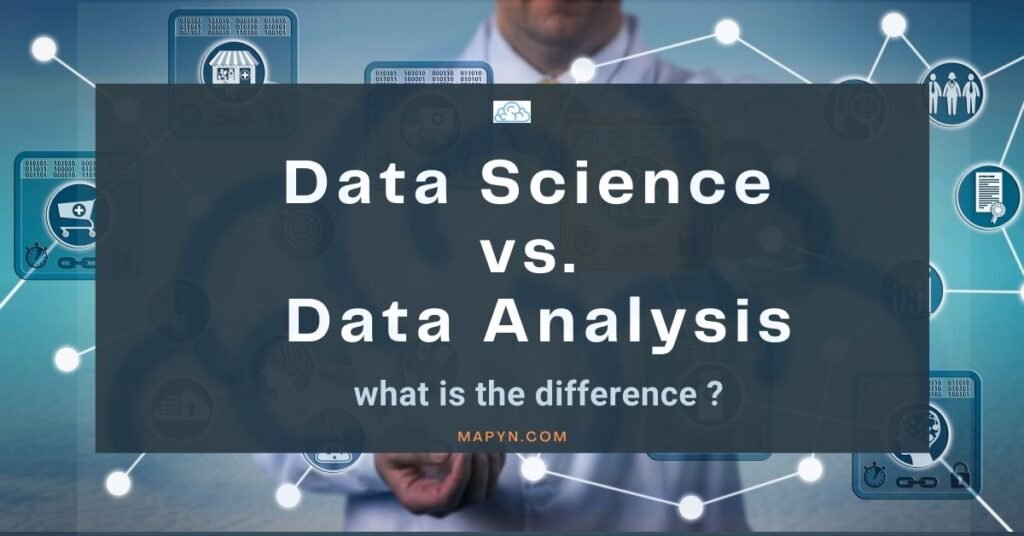
In such a fast-paced world, it is not surprising that we sometimes confuse certain technical terms, especially when they are developing at such breakneck speed and new areas of science emerge overnight. This is the reason why in the big data world, in which enormous and complex amounts of information are dealt with, some people still confuse certain concepts, tasks and roles that occur in this emerging and growing discipline.
One of the biggest confusions in this area is the difference between data analysis and data science, two very closely related but distinctly different areas.
Although both are at the intersection of math, statistics and development, their services have significantly different tangents, which means that the profiles of the professionals working in the two areas are also very different. It is important that anyone who wants to specialize in big data knows what kind of knowledge and skills they need to acquire if they choose either data analysis or data science.
The differences between data science and data analysis
For decades, experts have tried to narrow down the field of activity of one discipline or another, but they have not always been successful. However, since 1996, when the term “data science” began circulating thanks to an article by Gregory Piatetsky-Shapiro, definitions have come a long way, and it seems we can now clarify the scope of both areas. Below is an updated Venn diagram that includes the different specializations and their respective roles.
What is data science?
Data science is currently considered a branch of big data. Their goal is to extract and interpret information from the vast amount of data that is collected by a given company, be it for its own use or for operations it may be doing with third parties.
To achieve this, data scientists are familiar with the design and implementation of mathematical algorithms based on statistics, machine learning and other methods. This enables companies to employ tools that allow them to trade in one way or another depending on the circumstances and schedule.
It is also not just about extracting information from the collected data and being able to use it. Data scientists are also charged with making sure that the patterns they recognize are correctly visualized so that they are clear and understandable to those who make decisions based on that data.
What is data analysis?
In the data analysis , however, it is usually to be specific and precise application of data science. Therefore, in industries that have integrated data analytics, the role of analysts has been to look for raw sources of information to find trends and metrics that will help companies make more accurate decisions and get better results.
In this case, we need to be careful not to confuse their work with that of someone in business intelligence who works with a much smaller amount of data, which means that their capacity for both analysis and prediction is more limited.
So the main difference between data science and data analytics is the big data branch, on which both areas focus: while the former is on the path to discovery with far-reaching goals, the latter is more focused on the process of different companies providing solutions for existing ones Apply and search for problems.
So, while data scientists are masters at predicting the future by basing their predictions on patterns from the past seen in the data, data analysts extract the most relevant information from the same datasets. You could say that the former asks questions to find out what will happen in the next few years, while the latter is responsible for answering questions that are already on the table.
What applications of Data Science and Data Analytics
A key difference between the two disciplines is therefore how they are applied in the various industries. In fact, data science has had a huge impact on search engines, which use algorithms to better answer user queries in the shortest possible time.
Likewise, data scientists have had a significant impact on the development of recommendation systems. As for primarily visual content, as is the case with Netflix, or shopping sites like Amazon, these systems provide customers with much more accurate recommendations, which greatly enriches the user experience.
In the case of data analysis, they are used more often in areas such as healthcare, so that health centers can care for their patients more efficiently.
This discipline is also frequently used in other industries such as energy management, as thanks to data analysis you can optimize where resources are used and, if necessary, even automate certain services in order to avoid unnecessary costs.
Analysts are also in great demand in the hospitality industry as they can help hotels identify travelers’ preferences and offer alternatives that best suit their tastes and needs.
As you can see, there are many factors to consider before entering the big data world. Data analysis and data science are very closely related disciplines, but not without their differences, which is why we know that choosing the right path can be difficult. Here is a roundup of the key differences we talked about in this post:
| Data Science | Data analysis |
| Creation of predictive models and algorithms Advanced knowledge of machine learning Broader and more diverse field of activity Tends to work with unstructured data Expert in statistics and mathematics Experience with SQL Knowledge of Python, R, SAS and Scala Applications in areas such as artificial intelligence, health, blockchain or website search engines | Draws conclusions from various data sources Familiar with data warehouse, ETL tools and business intelligence Strong command of Python and R Field of activity limited to the corporate sector Skill in data visualization Expert in handling data Business knowledge and decision-making skills Applications in areas such as retail, travel, healthcare, or marketing |
